Visual analysis of biophilic design: How social media users engage with nature-inspired trend

Urbanization and pandemic lockdowns have driven people indoors, leading them to reconsider their relationship with indoor and outdoor spaces. As a result, biophilic design has emerged as a way to reconnect people with their innate need for the comfort and tranquility of nature.
Biophilic design is all about bridging the gap between people and nature through thoughtful architecture and interior design. By incorporating natural elements and processes into homes and buildings, it aims to enhance well-being, health, and productivity. Rooted in the concept of biophilia – our innate desire to bond with nature – this trend has been gaining significant attention recently.
Social Media Listening helps us analyze how people interact with biophilia. Using YouScan, Naya Ratanapruksakul, a Market Research and Insights Expert, analyzed publicly available data from various online platforms to quickly and thoroughly gain quantifiable consumer insights at scale.
-1712239062.png)
-1712239062.png)
The study examined posts related to biophilic design from countries worldwide to understand how consumers interact with and express biophilic design globally.
Biophilic design is everywhere — indoors and outdoors!
Naya discovered that biophilic design impacts both indoor and outdoor spaces. Through YouScan's Visual Insights technology, Naya analyzed thousands of online images, with objects automatically tagged by key categories.
Using the Cluster feature, Naya distinguished two primary biophilic design themes: green-colored clusters for indoor areas like 'dining room' and 'living room', and yellow-colored clusters for outdoor elements such as 'city' and 'swimming pool'. These clusters highlight biophilic design's presence in both indoor and outdoor aesthetics.
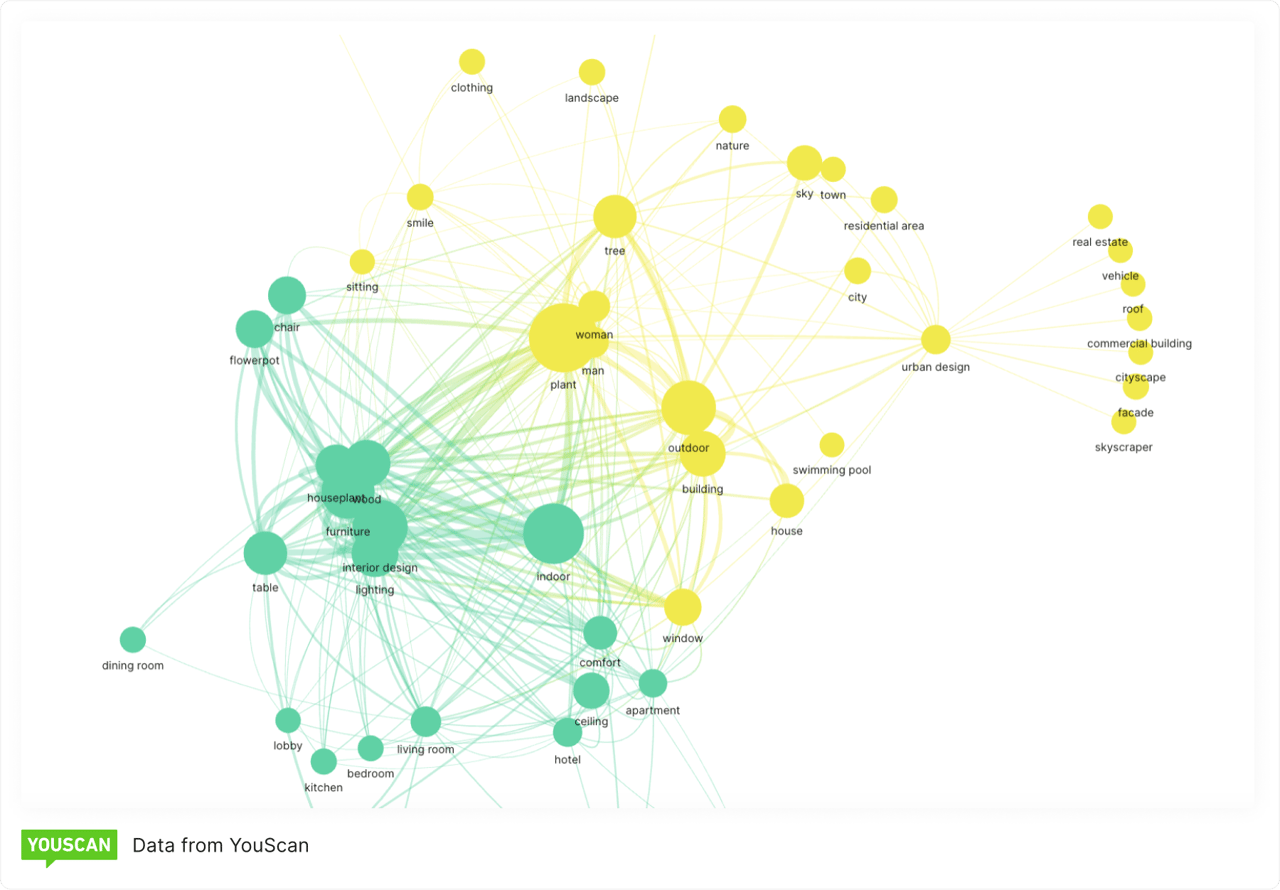

What do the indoor and outdoor aesthetics of biophilic design look like?
Naya examined both indoor and outdoor biophilic design images and noticed that they bring out expressions of biophilia that extend beyond just design and architecture.
People connect with biophilia in three main ways:
Association: Placing and incorporating nature elements in a space, biophilic design.
Inspiration: Integrating nature elements into wearable or usable objects, garments. and textiles
Invention: Reinventing drawings and characters incorporating nature elements, drawings and fantasy characters.
Association: Incorporating nature into a space
Unsurprisingly, biophilic design showcases the interior design and architectural expression of biophilia. We can see the literal merging of building structures and plants in areas such as building entrances and gardens. People have incorporated nature quite literally into their living spaces!

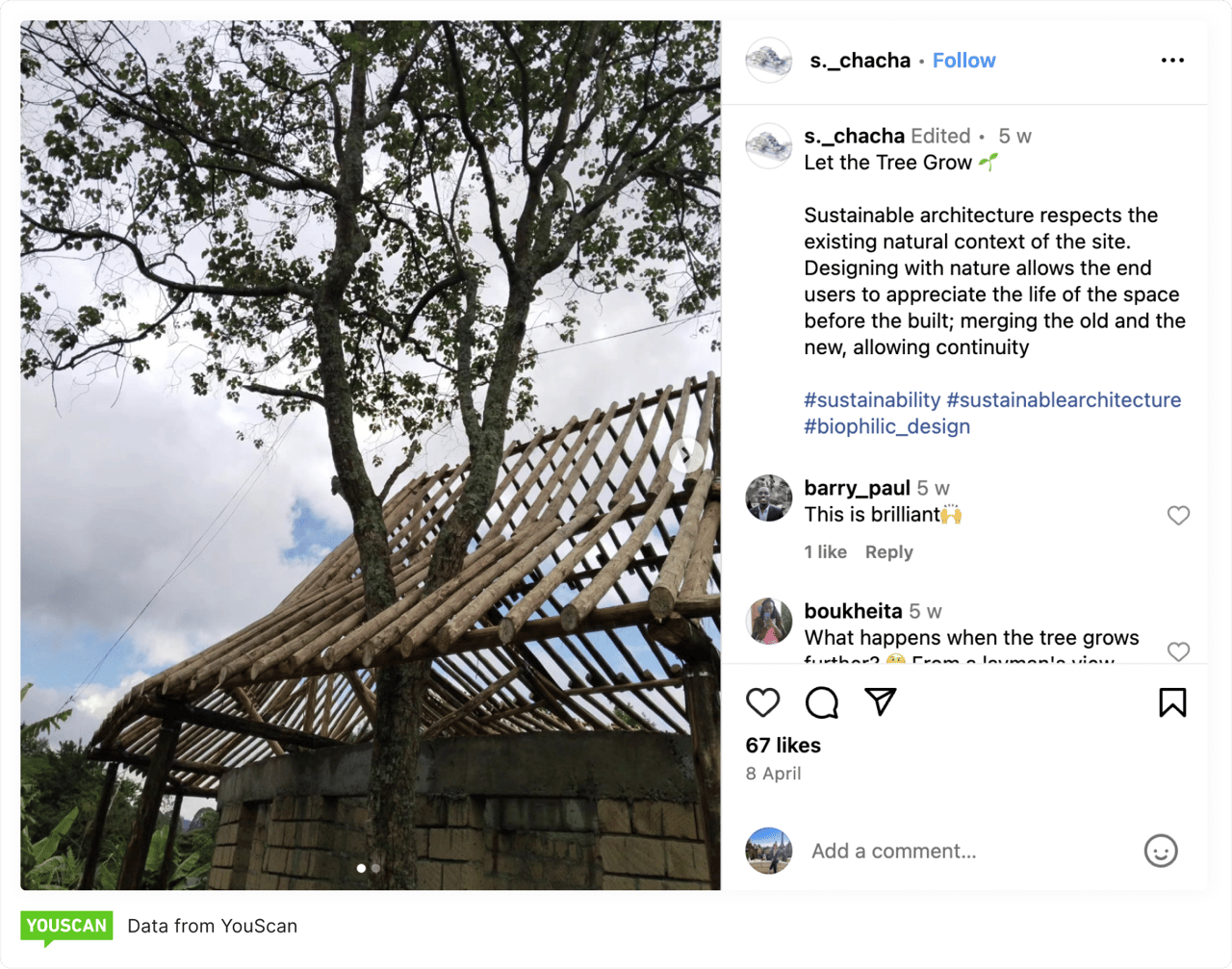
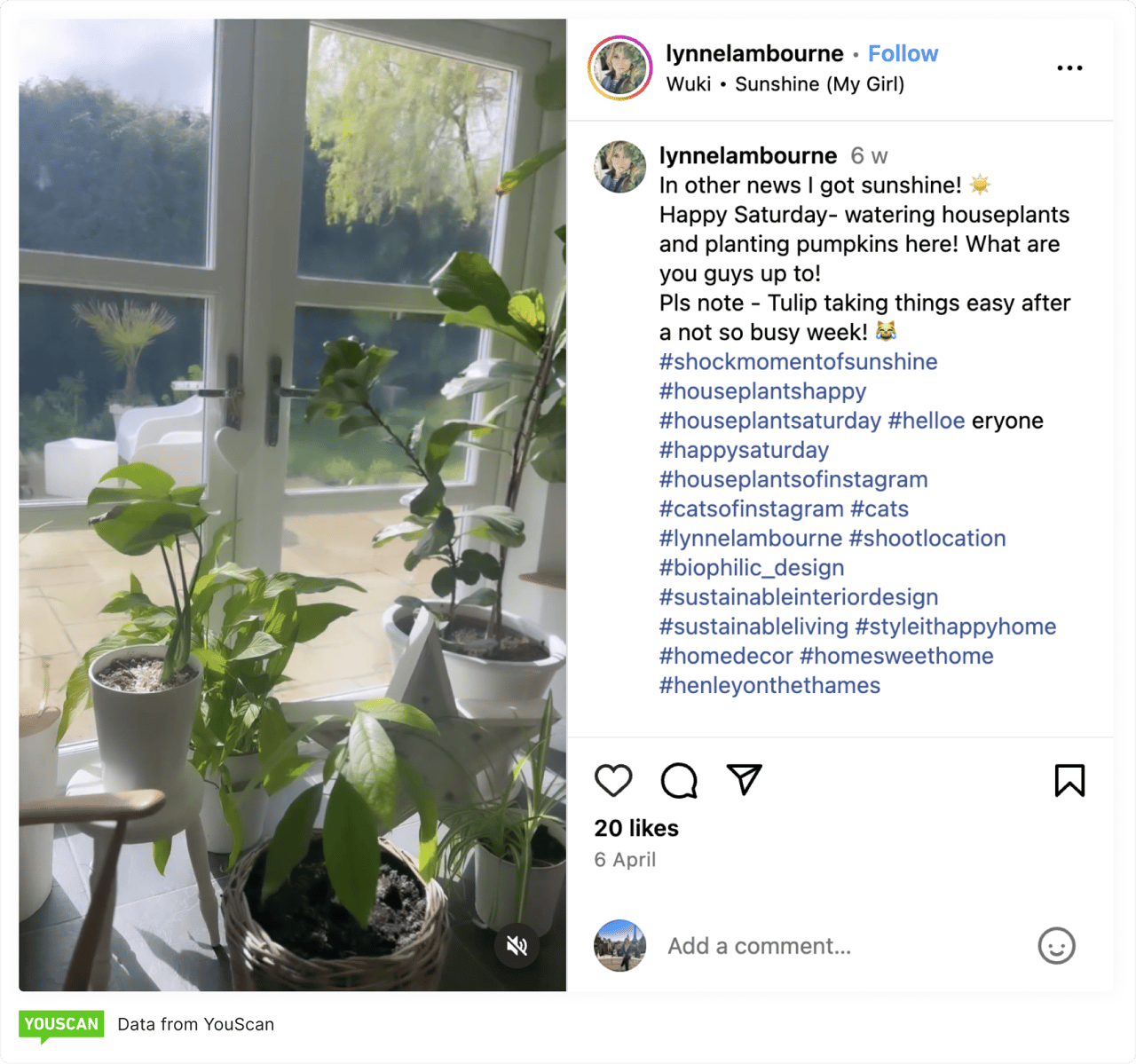

Inspiration: Biophilia resonates on a more personal and intimate level
Naya discovered that on a deeper level, nature touches a more intimate and personal side of everyday human life. Here, nature extends beyond living spaces, becoming closer and more intimately intertwined with humans through objects that can be used or worn, such as nature-inspired handicrafts and clothing.
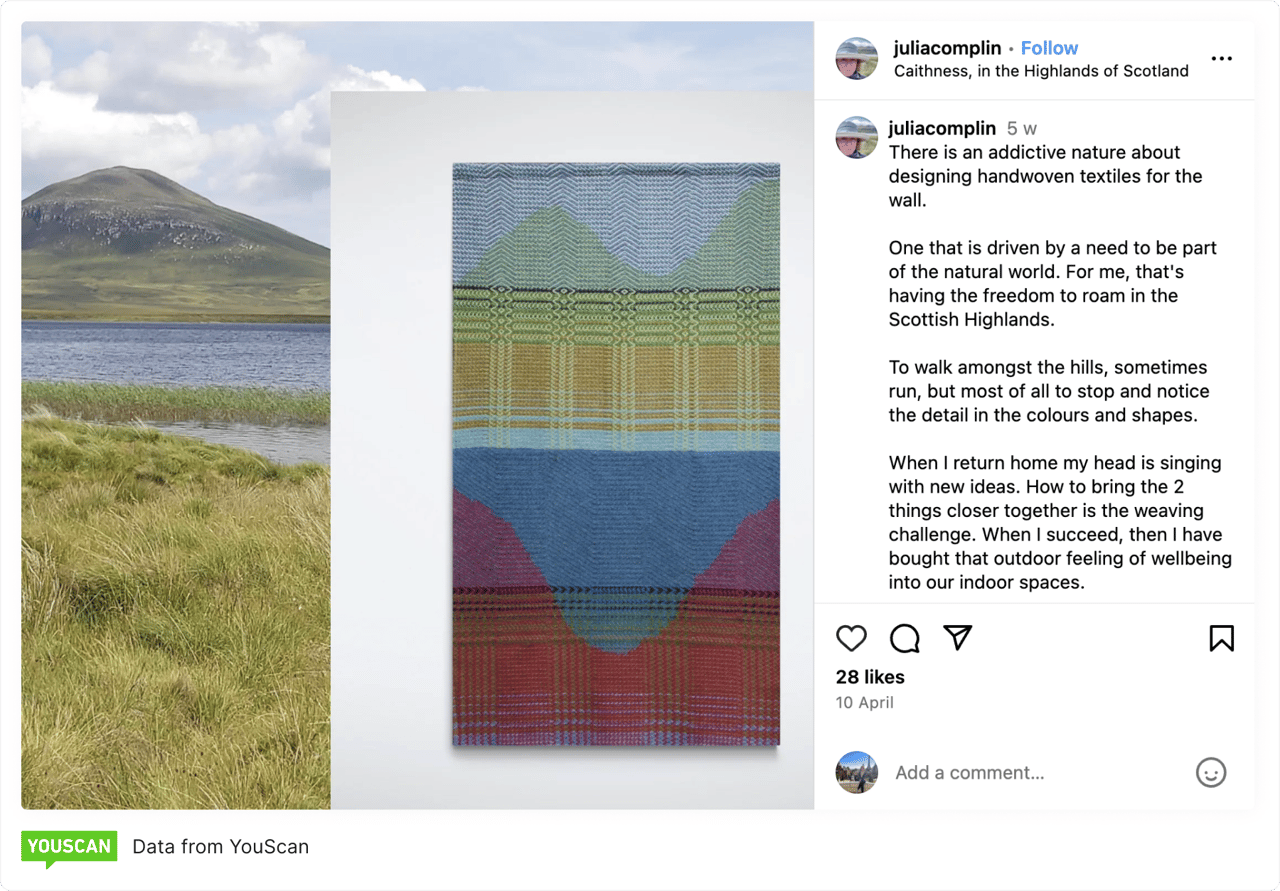

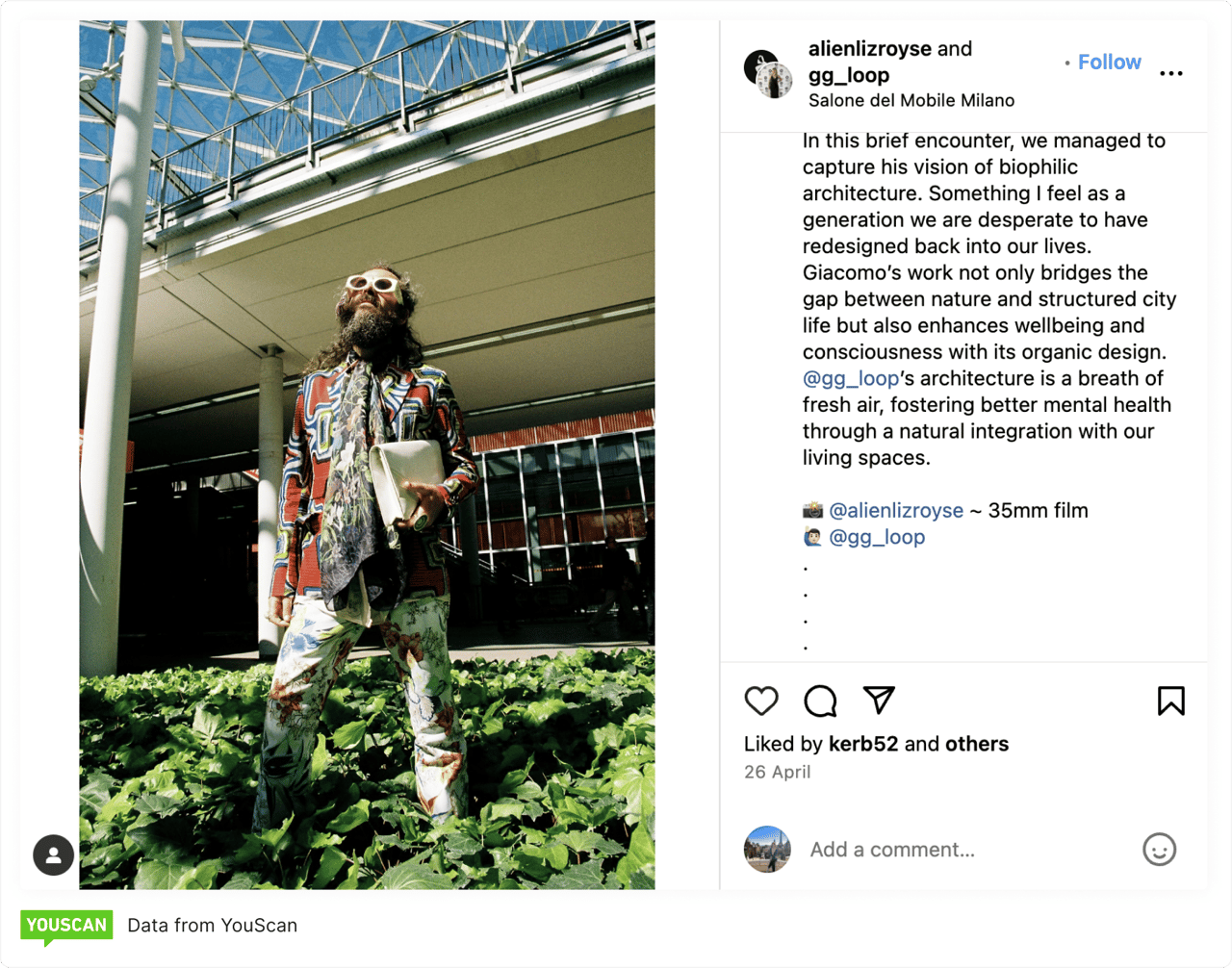

Invention: Nature surpasses realism
Once more, we delved into images using the Gallery feature. Nature exists here simply as visual art on its own. These artworks showcase drawings and computer-generated graphics of biophilia-related fantasy characters, such as Poison Ivy from DC Comics. It's a celebration of the human expression of nature, surpassing mere realism. Indeed, the essence of nature transcends tangible shapes, residing within us in all forms!
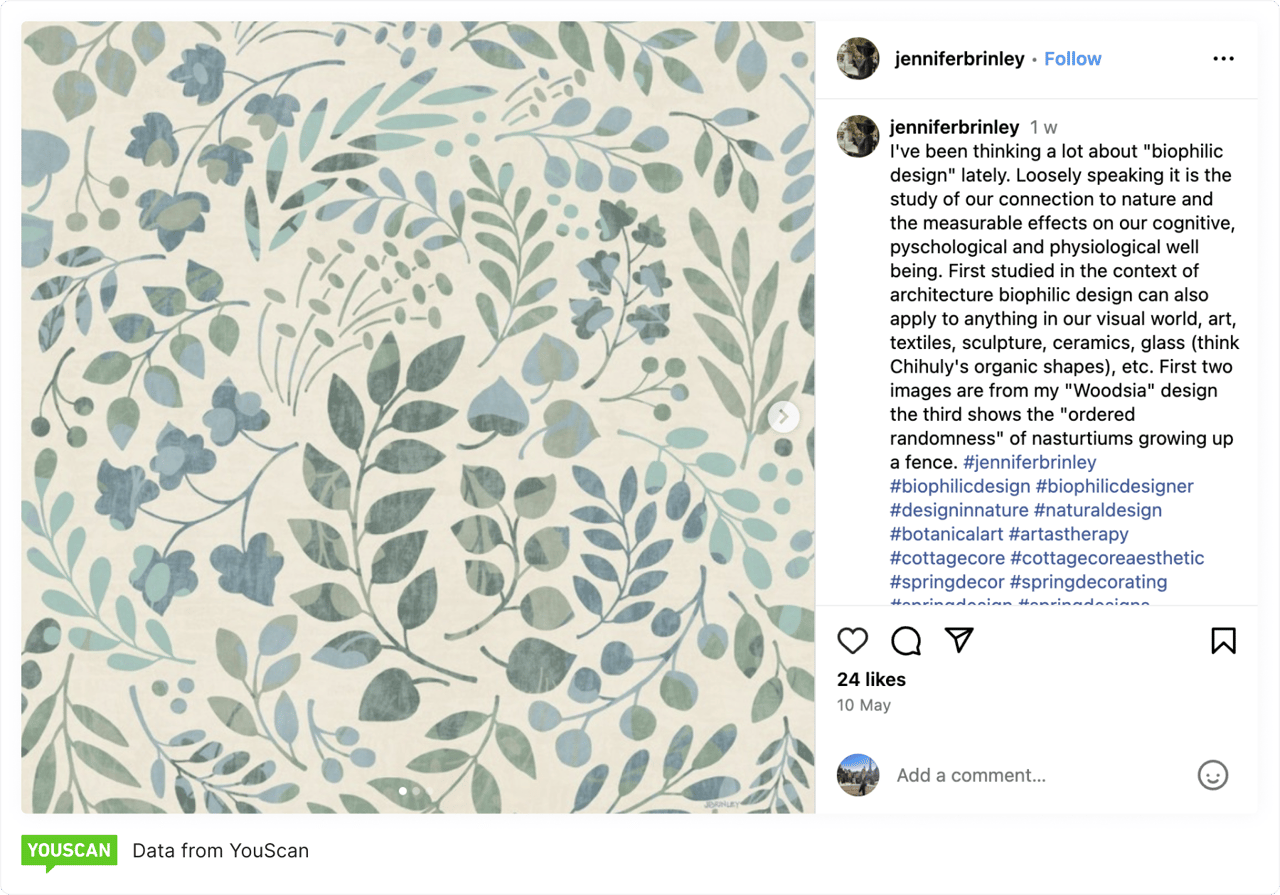

What associations does biophilic design have?
Sustainability is closely associated with biophilic design
Given their inherent connection to nature, biophilic design and sustainability are closely intertwined. The term 'sustainable' is frequently mentioned, and many authors express interest in sustainability on their profiles. Therefore, this recurring theme in discussions and profiles underscores the strong relationship between sustainability and biophilic design.
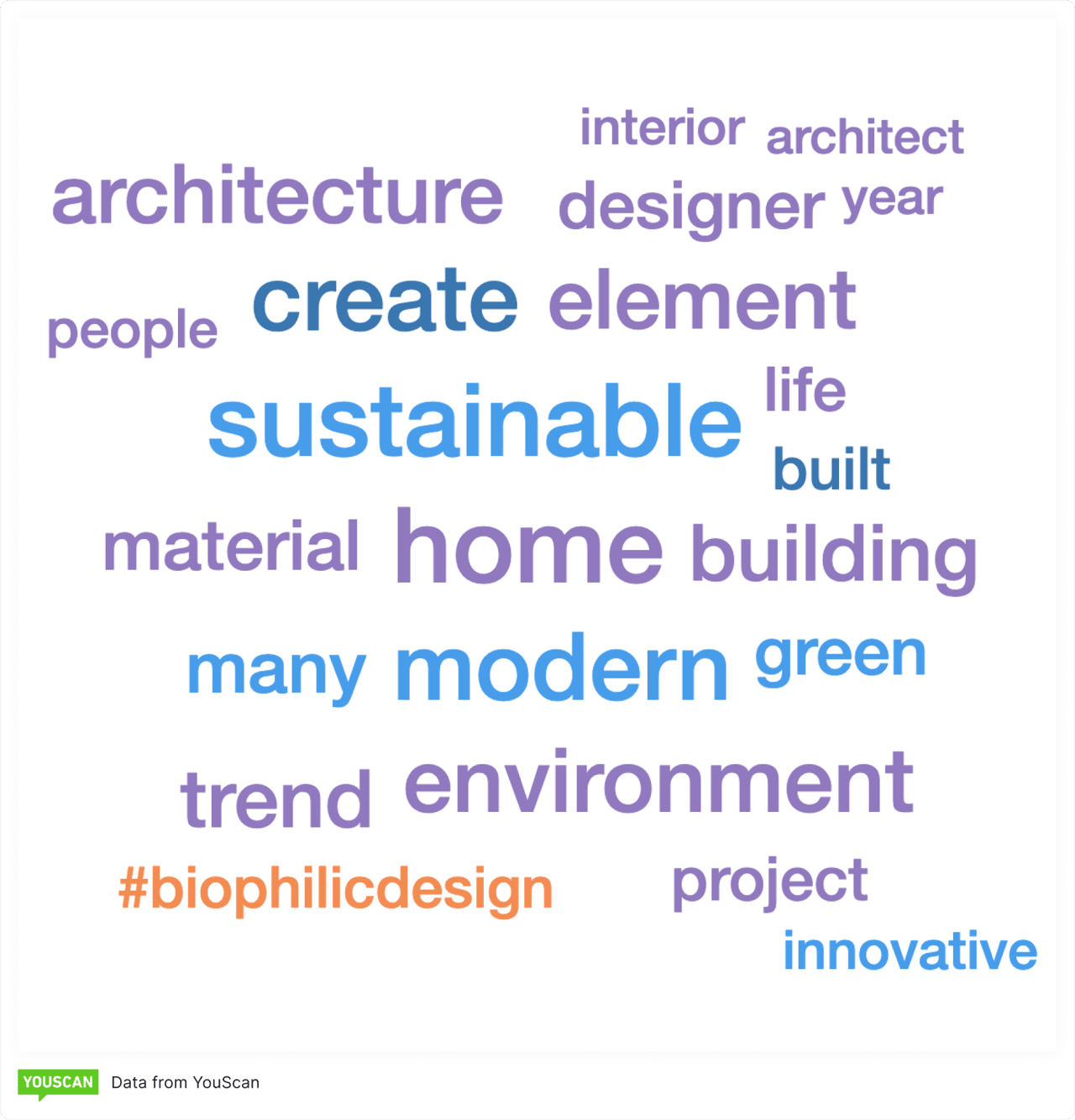

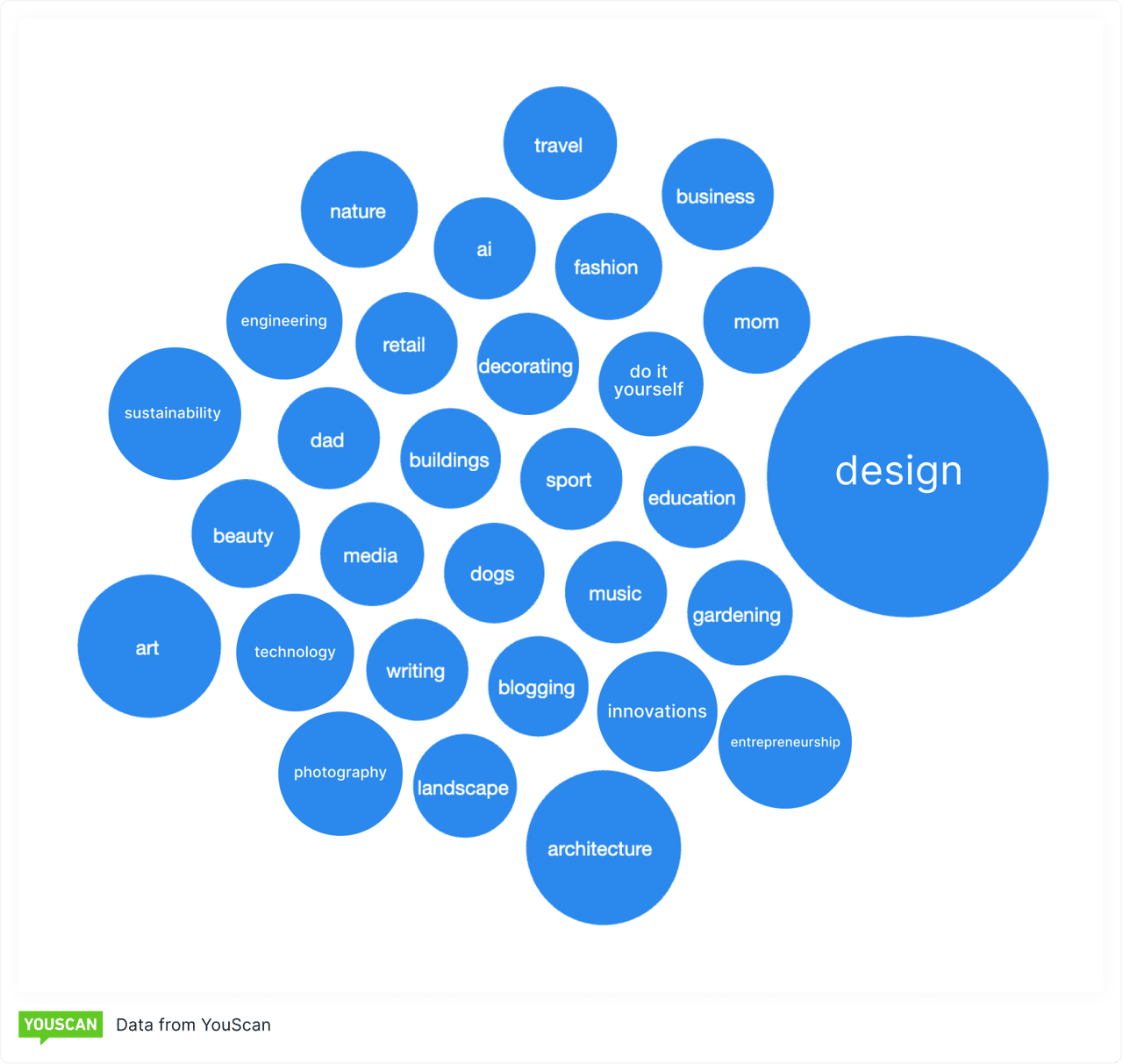

Biophilic design attracts overwhelmingly female interest
Most authors contributing to biophilic design-related content are female, especially in the 25-34 age group. Additionally, there's a notable presence from the 35-44 age group.
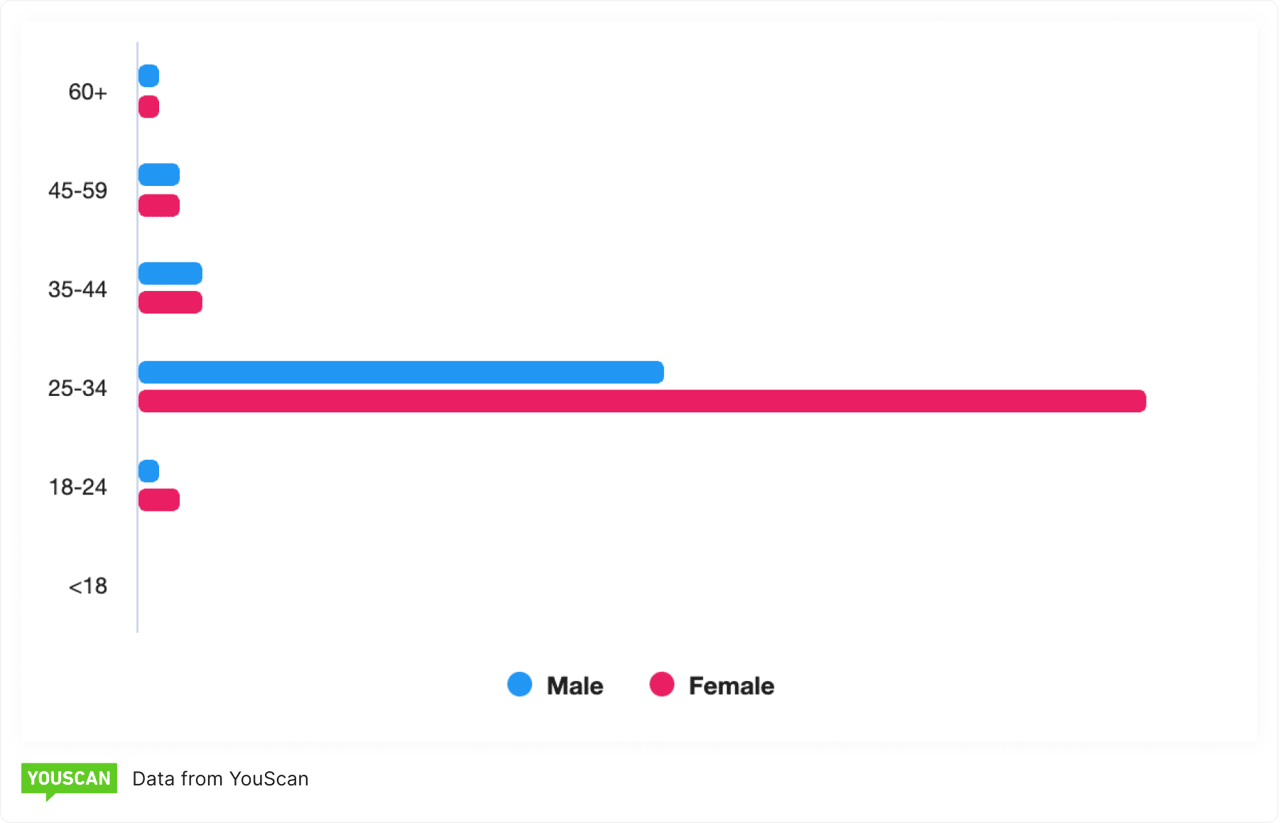

How do people perceive biophilic design across various online sources?
Pinterest and Instagram: The aspirational vision of biophilic design
After filtering images by source type, Naya used YouScan's Visual Insights Gallery feature to analyze them, and encountered the idealized form of what consumers perceive as the epitome of biophilic design. Polished, picture-perfect, touched-up concept designs, alongside futuristic prototypes, portray the full potential of biophilic design.
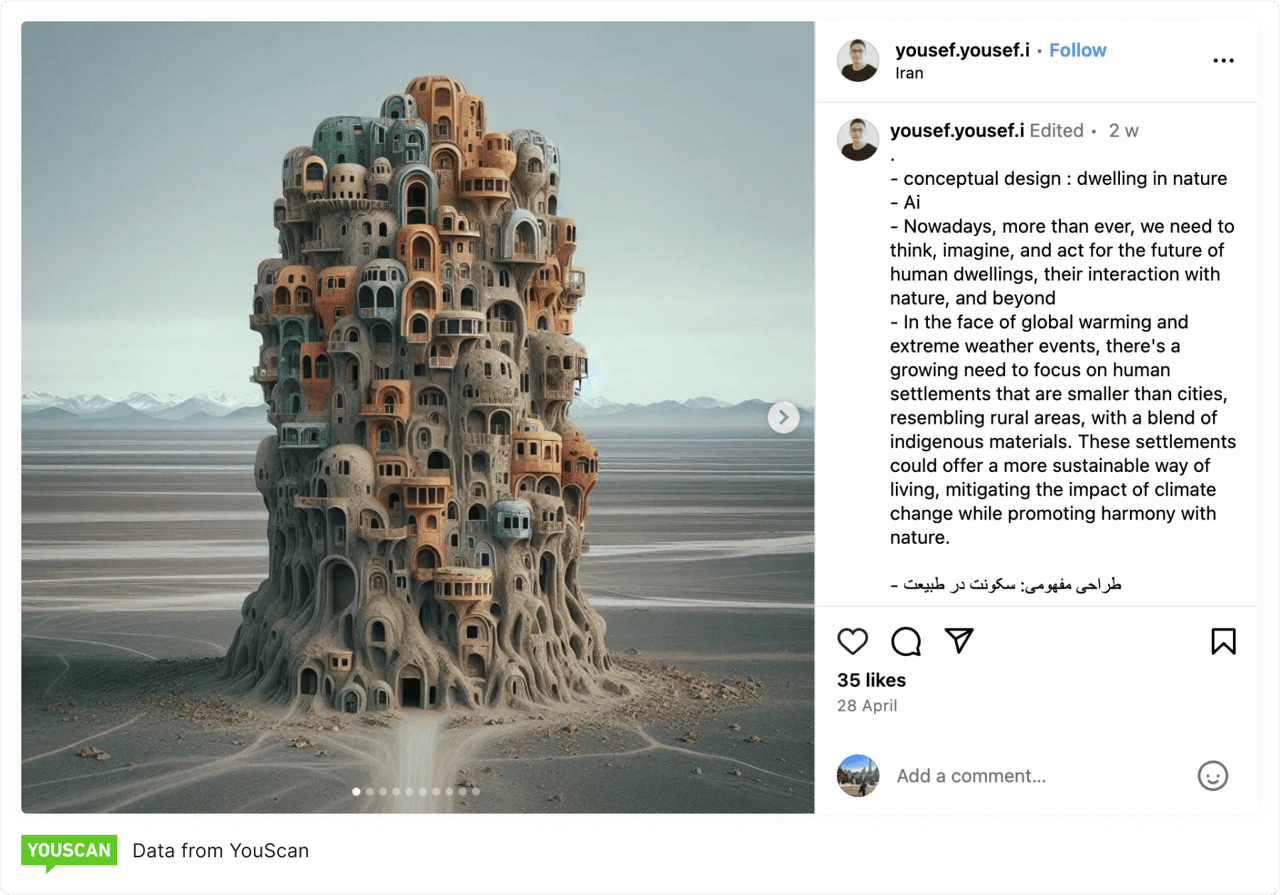

Tiktok: Your hands-on guide to Biophilic design
Biophilic design posts on TikTok tend to emphasize DIY guides and the nitty-gritty behind-the-scenes process of enhancing your space with biophilic design. These posts are educational, relatable, and suitable for amateurs looking to delve into biophilic design.
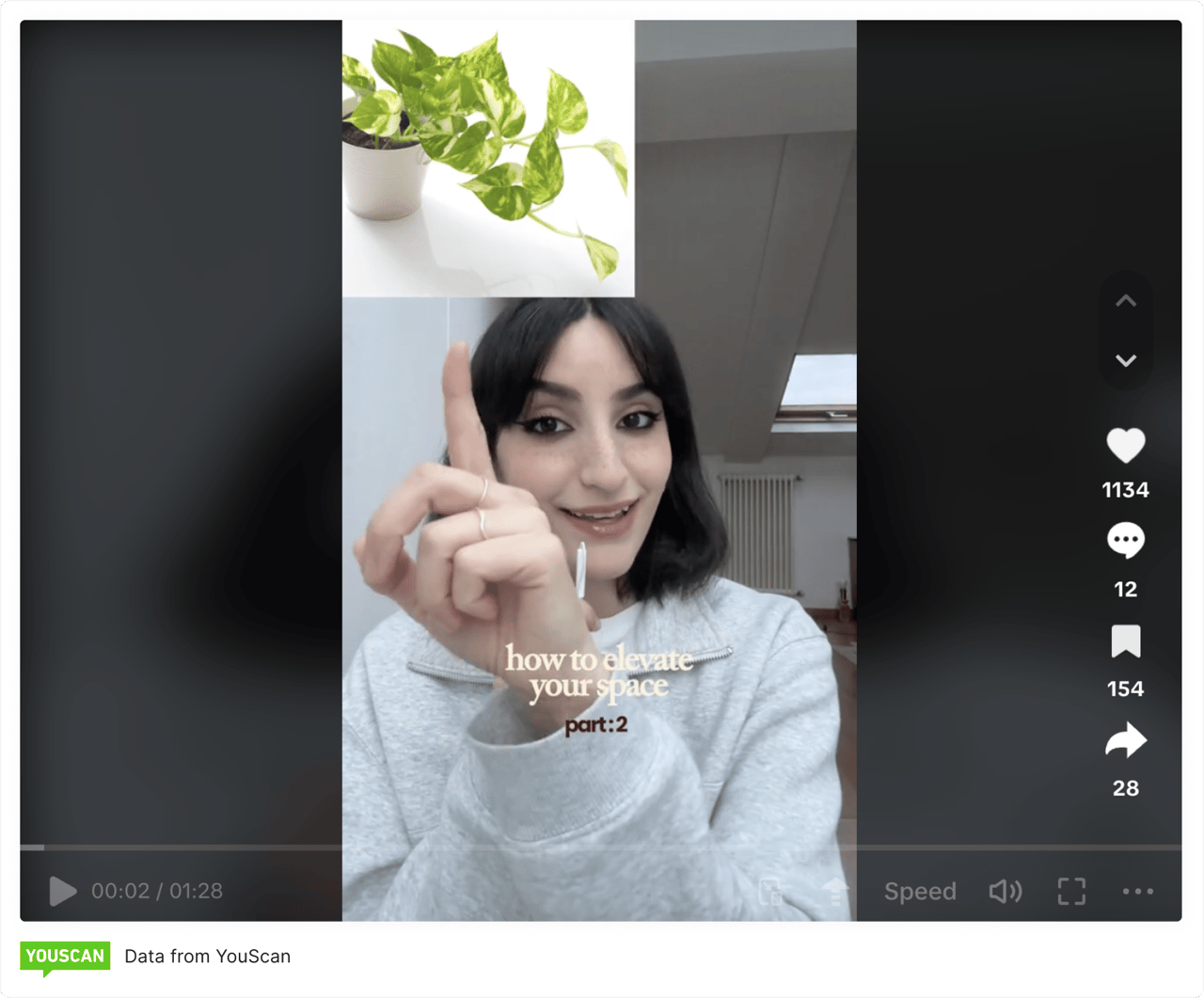

Pinterest is the most popular, while Instagram sees greater engagement
Pinterest shines as the data source with the most mentions relating to biophilic design.

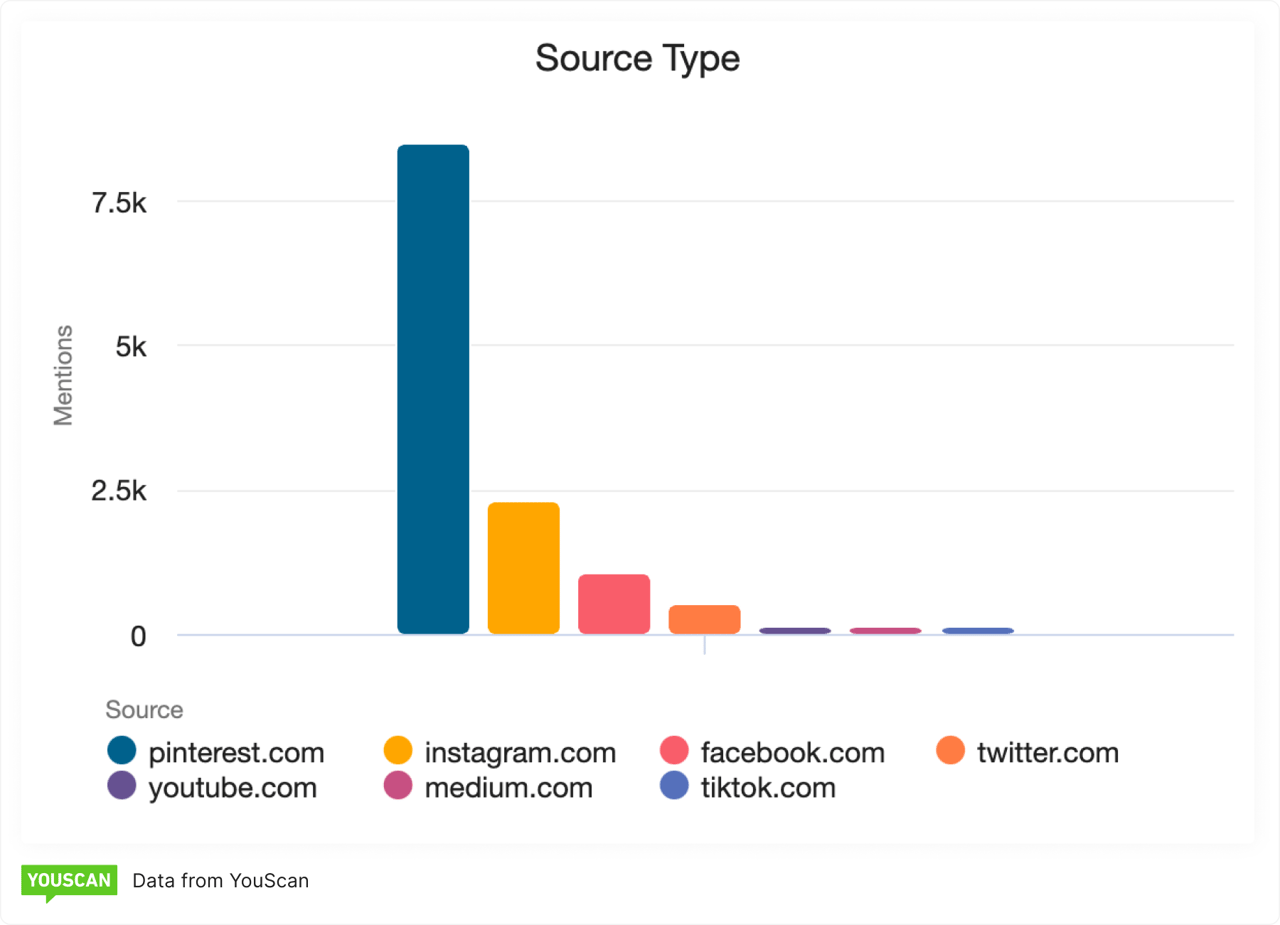
On the other hand, Instagram posts take the lead in engagement. The chart below illustrates the top four platforms based on engagement, where Pinterest does not feature.
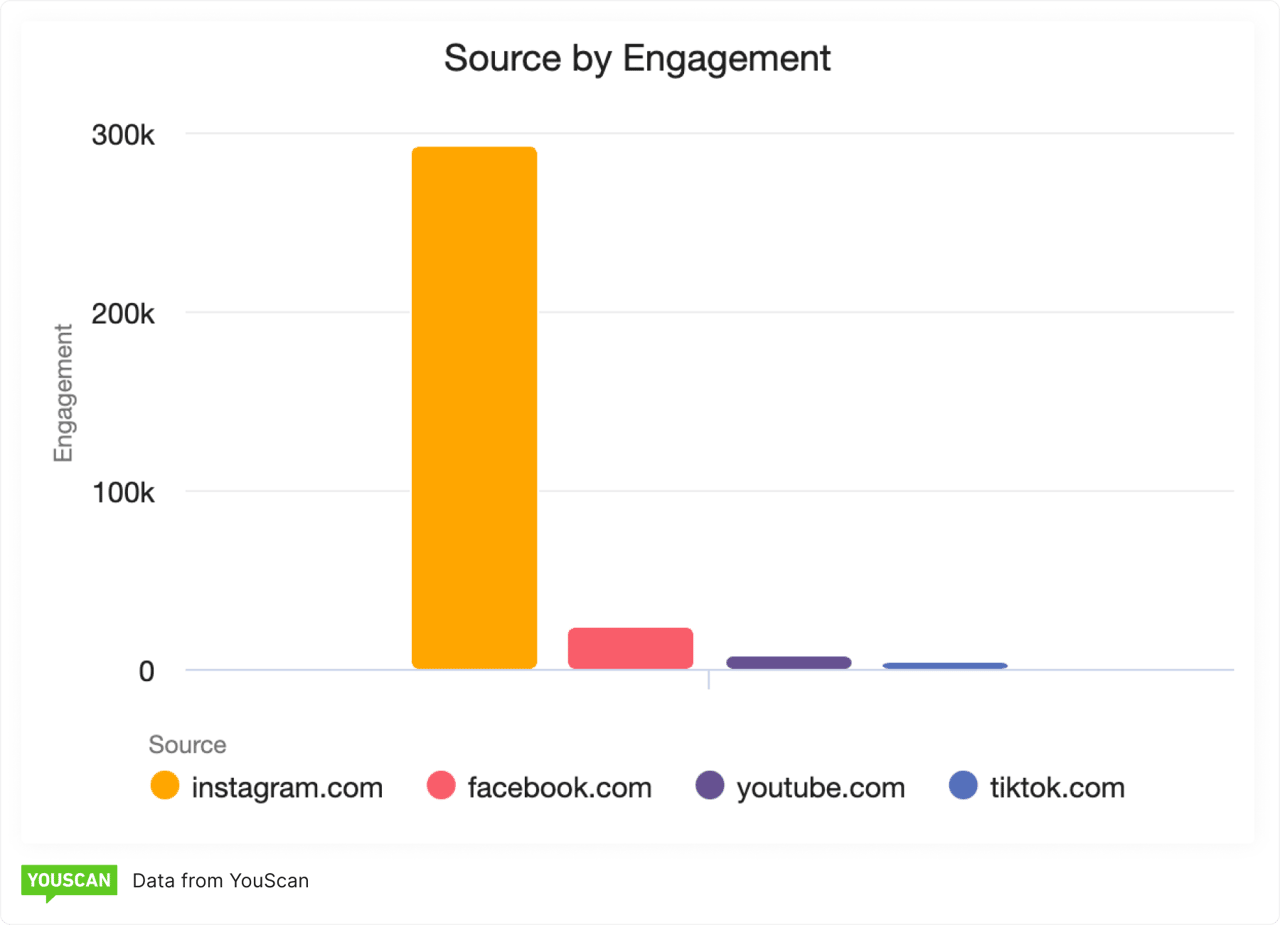

Final takeaway: Freedom emerges from Biophilia
Biophilia brings us closer to nature, paving the way for us to embrace its freedom. This freedom is evident in the diverse ways people interact with nature — associating, inspiring, and integrating it into their lives. By blurring the line between the natural world and our daily lives, biophilia calms our nervous system and frees us from the stress and anxiety that may arise during our day-to-day activities.
This image, shared by a UK-based physician using biophilic design to enhance her patients' well-being, says it all.
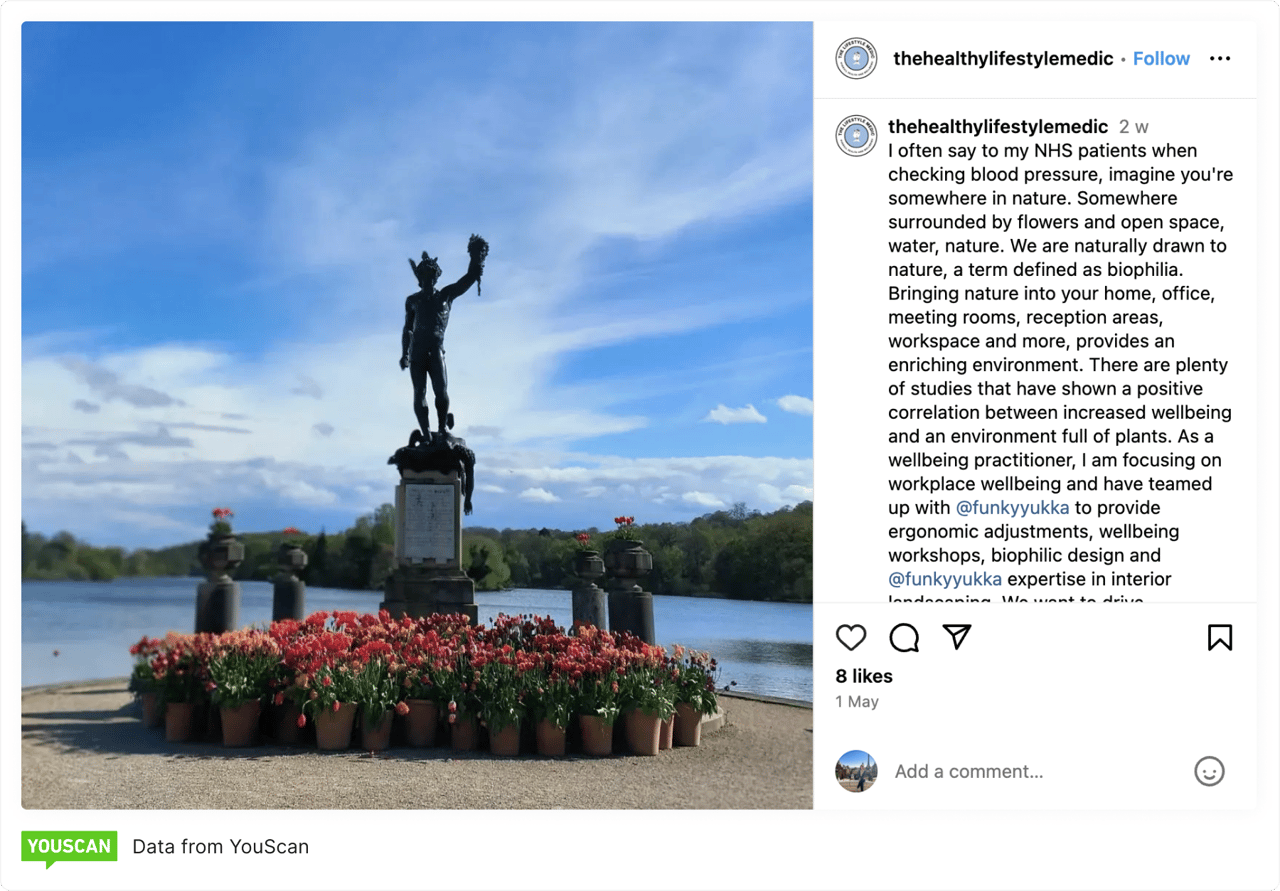


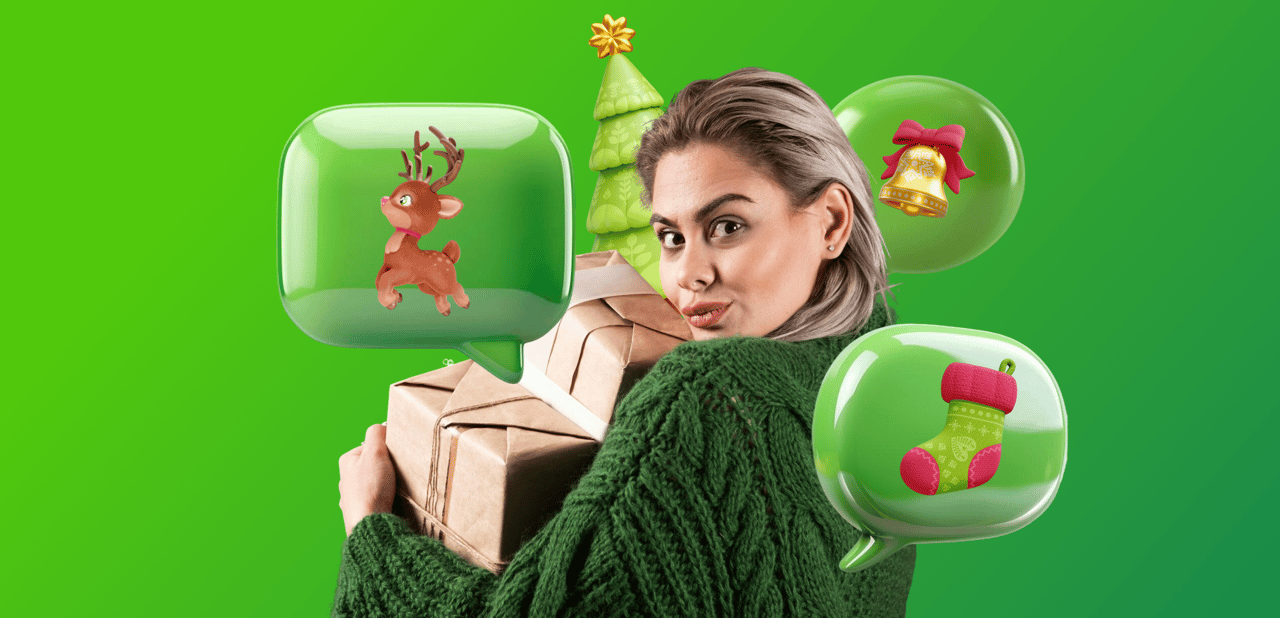

.png)